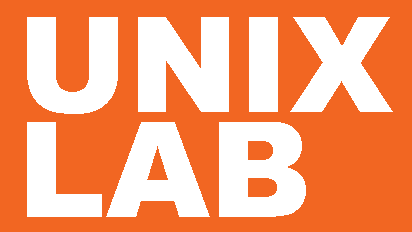Process Modeling using Aspen Plus
Course ID : EAP101
Duration In-class (в days) : 3 days
Duration Online : 3 days
Сurriculum : in-class, Virtual Instructor-Led Training - ONLINE
Delivery
:
04.06.2025 - 06.06.2025
12.11.2025 - 14.11.2025
Price : $1 935
Overview
- Gain the practical skills and knowledge to begin modeling new and existing processes
- Learn some practical techniques for building and troubleshooting flowsheet simulations
- Reduce process design time by testing various plant configurations
- Determine optimal process conditions to improve current processes
The original description of the course on the AspenTech website
Audience for this course
- Engineers new to Aspen Plus who need basic training to get started
- Aspen Custom Modeler® users who need exposure to steady-state simulation as preparation for using Aspen Plus Dynamics®
Prerequisites for this course
A background in chemical engineering or industrial chemistry.
Outcomes
Process Modeling using Aspen Plus (Includes Sustainability Module)
Upon successful completion of this course, you will be able to:
- Develop the skills and techniques required for modeling new and existing processes, in steady state.
- Build and troubleshoot flowsheet simulations, with distillation columns, reactors, heat exchangers, pressure changers, and separators.
- Reduce process design time by evaluating various plant configurations with respect to sustainability (costs, material and energy usage, effect on environment).
- Determine optimal process conditions for new or existing processes and help de-bottleneck processes
This course will help you prepare for the certification exam and the exam fee is waived with this course.
Outline
-
Introduction to Flowsheet Simulation
- Introduce general flowsheet simulation concepts and Aspen Plus features
- Review the benefits of process modeling using Aspen Plus
- Discuss the approaches to flowsheet simulations
-
The User Interface
- Become comfortable and familiar with the Aspen Plus graphical user interface
-
Properties Environment
- Develop a working knowledge of the Aspen Plus Properties Environment
- Learn to enter Components and Property Method for a process flowsheet
- Review the save options for Aspen Plus models
- Workshop: Build a Simulation Flowsheet – Properties Environment
-
Simulation Environment
- Develop a working knowledge of the Aspen Plus Simulation Environment
- Build a process flowsheet and enter stream and block information in an Aspen Plus simulation
- Run the simulation
-
Flowsheet Results
- Review features for viewing simulation results
- Discuss options to enhance flowsheet output
- Workshop: Build a Simulation Flowsheet – Simulation Environment
-
Unit Operation Models
- Review major types of unit operation models
- Explore flowsheet handling techniques
-
Distillation Column Rating
- Enter the minimum input required for the RadFrac fractionation model
- Implement design specifications, stage efficiencies and column sizing
- Carbon Capture: Introduction to examples and additional resources – Sustainability Focus
- Workshop: Set up a methanol – water distillation tower model, implement efficiencies and size the column
-
Modeling Heat Exchangers
- Review the Aspen Plus models used for modeling Heat Exchangers
- Explore Activated Exchanger Analysis for heat exchanger design
- Calculate greenhouse gas emission for the process flowsheet using utilities – Sustainability Focus
- Workshop: Compare the simulation of a heat exchanger using three methods: two Heaters connected with a Heat stream, a Heater using a Utility, and a rigorous HeatX
-
Modeling Chemical Plant – Cyclohexane Production Workshop
- Apply acquired skills to build a cyclohexane production flowsheet
- Workshop: Create a flowsheet to model a cyclohexane production process
- Tips to control recovery to minimize material waste – Sustainability Focus
-
Physical Properties
- Key considerations in choosing a property method and review physical property parameters
- Learn how to choose an appropriate Property Method to represent single chemical or mixture
- Describe property set for reporting greenhouse gas emissions, COD, BOD, and pH – Sustainability Focus
- Workshop: Simulate a two-liquid phase settling tank
-
Sensitivity Analysis
- Become familiar with referencing flowsheet variables (accessing variables) which is used in sensitivity analysis, design specifications, calculator blocks and optimization
- Use a sensitivity analysis to study relationships between process variables
- Workshop: Use a sensitivity analysis to study the effect of the recycle flowrate on the reactor duty
-
Design Specification
- Introduce the use of design specifications to meet process design requirements
- Workshop: Use a design specification in the example flowsheet to fix the heat load on the reactor by varying the recycle flowrate
-
Calculator Blocks
- Introduce use of Microsoft Excel and Fortran Calculator blocks for flowsheet calculations.
- Workshop: Use a Calculator block to maintain the methane: water ratio in the feed to a reformer
-
Modeling Reactors (Simple and Rigorous)
- Introduce the various classes of reactor models available
- Explore details of the balanced based reactors
- Review details of the equilibrium and kinetic based reactors
- Workshop: Compare the uses of different reactor types to model an ethyl-acetate reactor
-
Modeling Pumps, Compressors, Valves and Pipes (Pressure Changers)
- Introduce unit operation models used to change pressure, such as Pumps and Compressors, and those which model pressure drop, such as Pipes and Valves
- Workshop: Evaluate compressor performance at different flowrates
-
Improving Flowsheet Convergence
- Introduce the idea of convergence blocks, tear streams and flowsheet sequences
- Workshop: Converge a flowsheet and review results
-
Process Improvement with Activated Analysis
- Review Activated Energy Analysis and Activated Economic Analysis tools for process improvement
- Investigate opportunities to improve energy efficiency and carbon footprint of the cyclohexane flowsheet – Sustainability Focus
- Workshop: Perform a cost analysis on the cyclohexane flowsheet using Activated Economic Analysis




